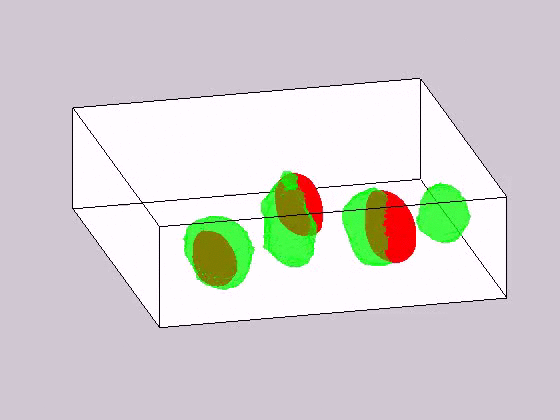
Holographic Optical Tweezers (HOTs)
What are Holographic Optical Tweezers?
A dielectric particle is drown to a large electric field gradient, this means that in a tightly focused beam the particle will be drowned to the focal point. Radiation pressure on the other hand blows the particle down stream, which competes with the gradient force. Optical tweezers are tightly focused beams of laser light which work in the domain where the gradient forces overcome radiation pressure. Since the original paper written by Ashkin et al. in 1986 optical tweezers are used for research in many fields including physics, chemistry, and biology.
A method in which one can convert a single laser beam into multiple traps positioned in three dimensions was invented by Eric Dufresne and David Grier in 1997. Since then, the Holographic Optical Tweezers (HOTs) have evolved, for details see article and David Grier's home page . The ability of HOTs to contorl micron scale objects enables us both to build structures with micron scale features and to study basic physics in the mesoscale. In the following sections both approaches are demonstrated.
We built a one-of-its-kind holographic optical tweezers combined with confocal imaging, that allows for independent and simultaneous three-dimensional optical trapping and imaging. Combining imaging and control of multiple micron-scaled objects in three dimensions opens up new experimental possibilities such as the fabrication of colloidal-based photonic devices, 3D active microrheology, as well as high-throughput studies of single biological cell dynamics. M. Yevnin et al., Biomedical Optics Express, 2013.

what can we do with them?
Assembling an icosahedron, Y. Roichman and D. G. Grier, 2005

Driving particles with a helical beam Y. Roichman D.G. Grier and G. Zaslavsky, 2007

Trapping a dividing cell, Maya Yevnin, Dror Kasimov, Yael Gluckman, Yuval Ebenstein, and Yael Roichman, 2013.
Holographic microscopy

Replacing the illumination source of a microscope with coherent light we obtain a hologram of our sample. This information can be reconstructed to give a 3D image from every single frame resulting in fast (camera rate limited) 3D imaging. We have extended the direct Rayleigh-Sommerfeld algorithm to accurately track colloidal particle pairs diffusing in 3D. This system is combined with our HOTs system occasionally.
D. Kapfenberger, A.Sonn-Segev, and Y. Roichman, Optics Express, 2013.
